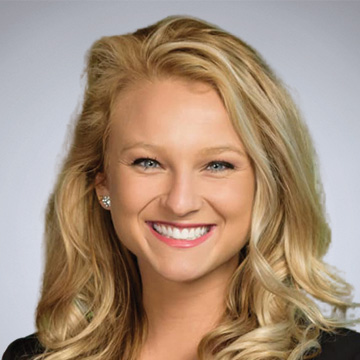Niche, please. These two words sum up a pressing requirement for the modern commercial mortgage broker. Rightly or wrongly, many borrowers see a broker’s offerings as commodities — wares that can best be described as goods or services with wide availability. This usually leads to smaller profit margins and diminishes the importance of certain factors, such as brand name, beyond the price.
Sometimes, they’re correct. After all, a mortgage lender can sell a loan on the secondary market without the consent of the broker or the borrower. And while the loan’s interest rate and terms may remain consistent, the borrower’s experience sometimes spans only a few months before the baton is passed to another lender or servicer.
Ask borrowers for sob stories about the loan process, however, and the opportunities for differentiation come through loud and clear. There will be talk of incompetent brokers, hidden fees, and lenders that are unfamiliar with certain types of businesses or ignorant of rural enterprises. The bottom line is that the limits of rates and terms are exposed, creating plentiful opportunities for quality brokers and lenders to stand out.
Lending niche
Banks can be a prime example. As an institution with rural businesses as its clientele, one bank’s specialty niche was clear. But the lender spent much of its early years fighting against being branded as such. The company avoided typecasting its brand and chose instead to paint a picture of lending widely to nationwide borrowers of many varieties.
The result? The bank’s generic image gave borrowers, brokers and agents little reason to seek out its services or tap the team’s deep knowledge of rural enterprise. The irony is the bank had already identified and honed its niche. All that was left was the marketing lift. A few years ago, company leadership finally embraced their rural specialty. As the COVID-19 pandemic hit and the world began flailing with unpredictability, the bank’s public image became narrow and precise: It was focused on rural America.
The precision paid off and the bank became a top performer. Mortgage brokers searching their mental Rolodexes for competitively priced funding for rural employers and entrepreneurs finally had a go-to lender for such requests.
For a broker, a niche can be a specific customer base, such as California restaurants or New Jersey infrastructure projects. It also could be more akin to a value proposition, such as low closing costs or white-glove service. A mortgage lender might specialize in efficiency (e.g., Rocket Mortgage) or high-touch night and weekend availability for prequalification letters in a competitive market. In today’s options-laden marketplace, the key isn’t to be all things to all people. It’s to be something stellar for someone specific.
Focused marketing
Parallels can be drawn from the insurance industry. Although the claims process may vary widely, one wouldn’t know it when consulting side-by-side charts of premiums, deductibles and coverage areas. Faced with seemingly symmetrical options, a customer’s final decision might come down to their emotional attachment to a gecko, a duck or an apron-clad Flo.
What can mortgage brokers and lenders learn from the insurance space? That brand-building efforts are essential. Consider the astounding volume of advertising purchased by some of the country’s best-known insurance carriers. Geico spent $2.1 billion on advertising in 2021 while Progressive dished out $1.9 billion. These insurers are well aware that competing on price and coverage isn’t enough to win market share. Brand awareness is key, while gaining it requires significant investment in a commoditized space.
Consider for a moment how deeply each of the major insurance companies’ value propositions have seeped into your own consciousness. What do you know about Geico? Probably that 15 minutes could save you 15% or more (savings). How about State Farm? Like a good neighbor, State Farm is there (reliability). Progressive?
Now that’s progressive (efficiency).
Did you notice something? While each of these attributes — savings, reliability and efficiency — likely are on the list of any insurance shopper, each brand homed in on a single one. Are they all things to all people? No. Instead, each company targeted a single differentiator, then proclaimed their finely tuned message with volume, repetition and creativity.
Being contrarian
Once a mortgage company has identified a niche, it’s time to publicize it. But in these difficult economic times, one might be thinking, “Hold on. In a recession, advertising is the first expense to go. Right?” Right and wrong. When brands tighten budgets, marketing is indeed among the first expenses to be cut. And that’s when market share is up for grabs.
To explain, consider the 1929 breakfast table. That year, two brands (Kellogg’s and Post) competed for cereal domination. In 1930, with the Great Depression raging, Post made the predictable move to rein in ad spending. Kellogg’s, on the other hand, seized the opportunity to saturate the abandoned space with marketing efforts. Three years later, the depression remained, yet the profit margin for Kellogg’s had grown by 30%.
Think this correlation was a fluke? Fast forward 70 years. In the wake of the 9/11 terrorist attacks on American soil, the economy was trembling and brands of all kinds were once again trimming their marketing efforts. With consumers tightening their discretionary spending, automakers were among the hardest hit.
Yet General Motors bucked convention and leaned into its roots as a company that had survived two world wars and the Great Depression. It blanketed the airwaves and newspaper pages with ads declaring interest-free financing and a bold declaration: “Keep America Rolling.” Other automakers were forced to follow suit, with Ford pledging to do its part to “move America forward.” The incentive-laden business of selling cars has never been the same since.
● ● ●
What direction the U.S. economy will take in the next 12 to 24 months is anyone’s guess. But one thing is certain: Brands that avoid catering to a specific clientele with a stellar product will fail while those that embrace a niche and invest in the required publicity efforts will grow. A company’s customers, employees and future market share may hinge on realizing the importance of a simple concept: Find your niche. ●
Author
-

Kaitlyn Crowder is the marketing director at North Avenue Capital, a specialized commercial lender in Ponte Vedra, Florida, that focuses on providing USDA business loans of $2 million or more to rural America and beyond. In 2022, Crowder received the Jacksonville Business Journal’s 40 Under 40 award for her community leadership. Crowder currently serves on the University of South Florida’s digital marketing advisory board, the Best Buddies of North Florida advisory board and The Human Collective’s advisory board. Additionally, she is a three-time opening speaker at the National Alliance of Commercial Loan Brokers’ annual conference.




